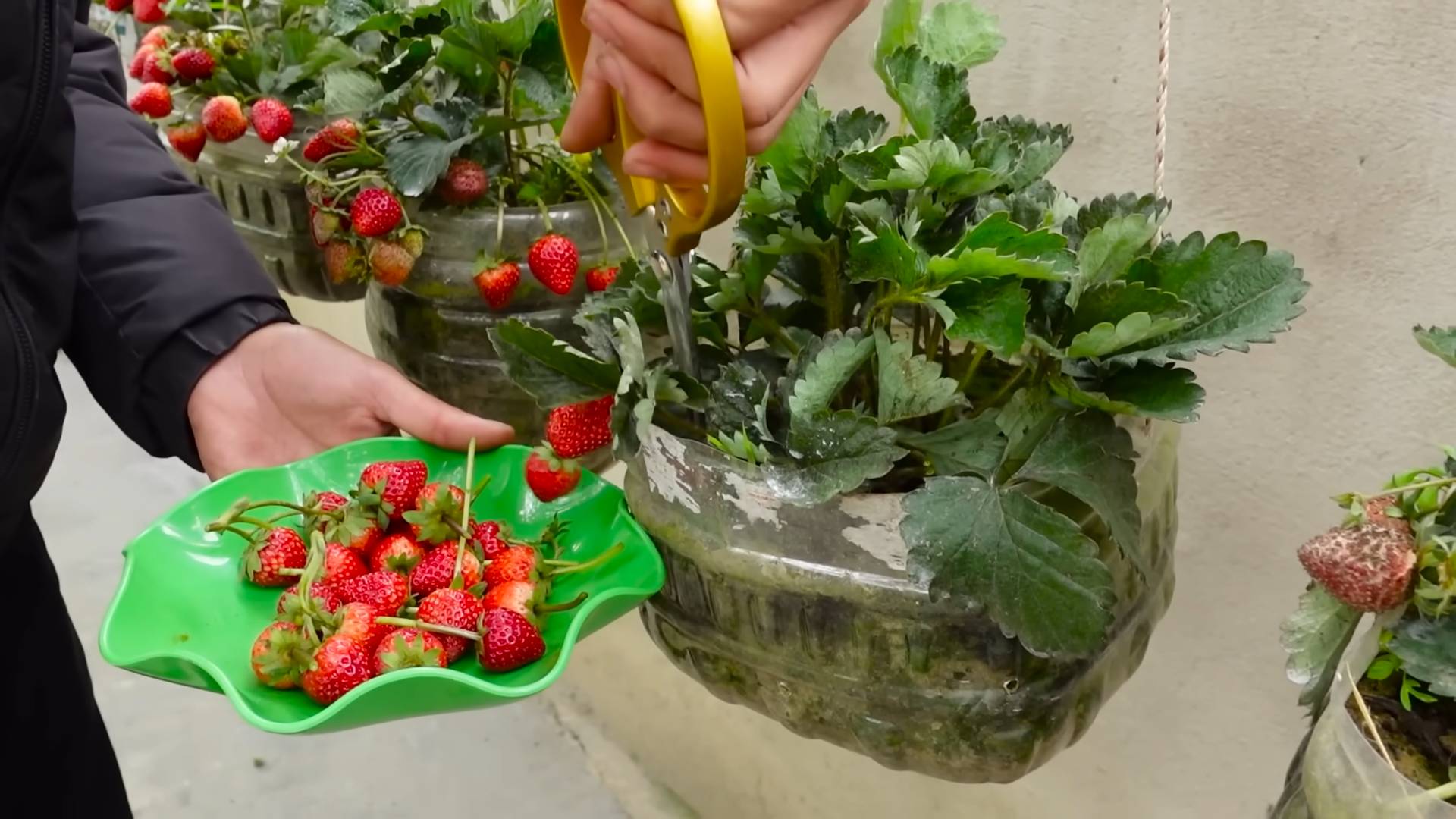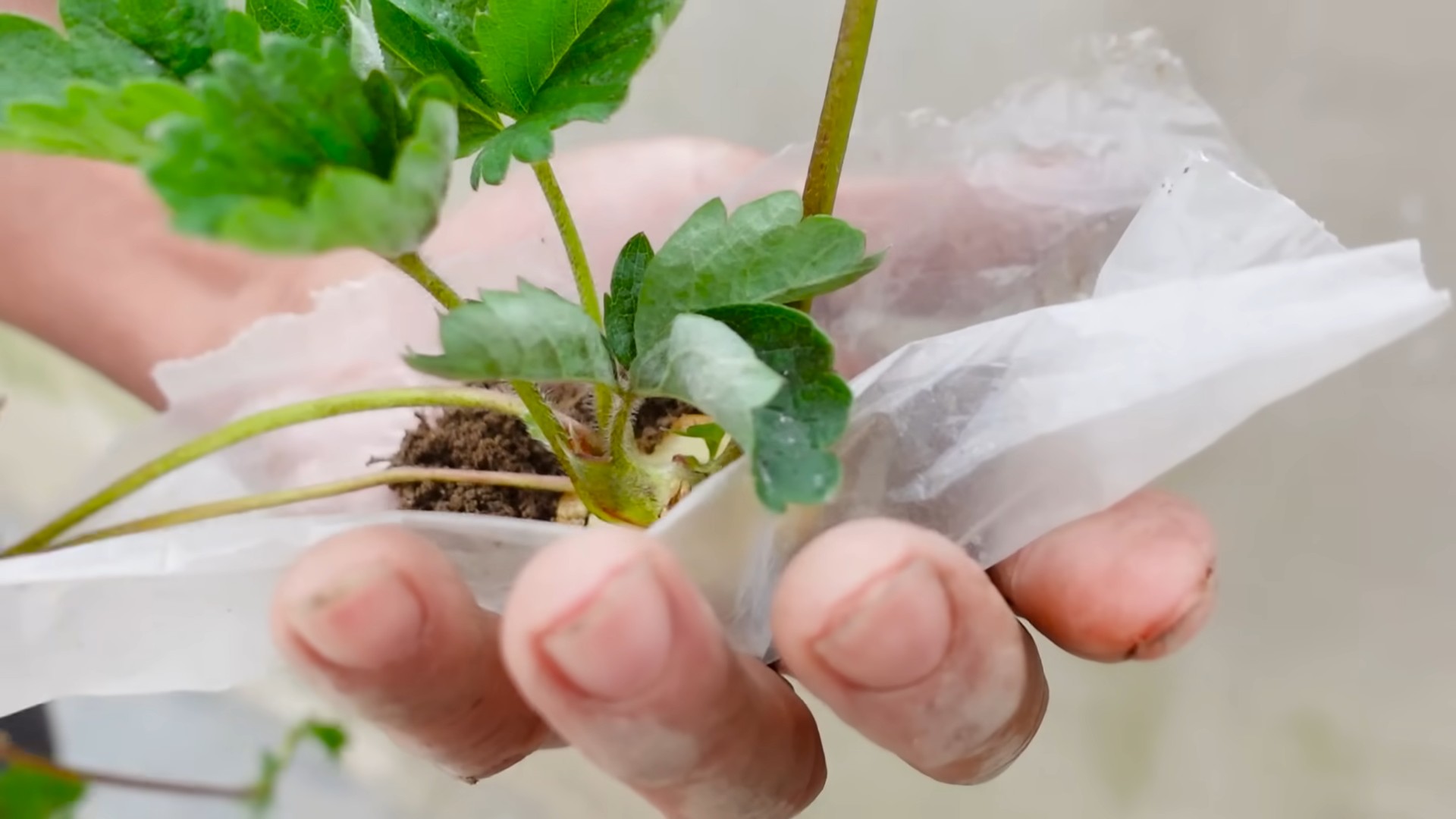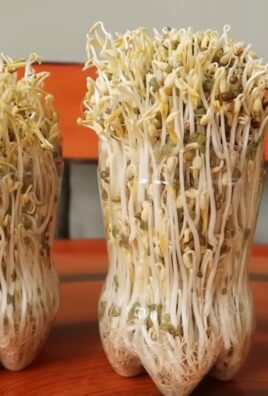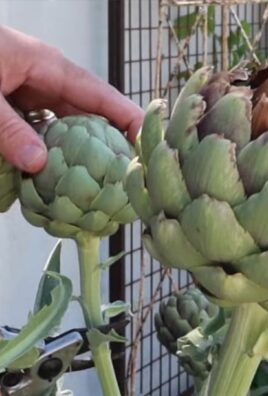Grow Strawberries at Home – imagine plucking juicy, sun-ripened strawberries straight from your own garden! Forget those bland, store-bought berries; we’re diving headfirst into the wonderful world of homegrown goodness. For centuries, strawberries have been cherished, not just for their delightful taste, but also for their vibrant color and symbolism of love and prosperity. From ancient Roman gardens to medieval monastery plots, these little red gems have always held a special place.
But let’s be honest, the thought of cultivating your own strawberry patch can seem a little daunting, right? Maybe you’ve tried before with less-than-stellar results, or perhaps you’re just not sure where to begin. That’s where these simple, yet effective, DIY tricks come in! I’m going to share my favorite hacks that will help you grow strawberries at home, even if you have limited space or a less-than-green thumb.
Why do you need these tricks? Because fresh, homegrown strawberries are simply unbeatable! Plus, knowing exactly where your food comes from and how it’s grown is incredibly rewarding. We’ll cover everything from choosing the right varieties to clever container gardening techniques, ensuring you’ll be enjoying a bountiful harvest in no time. Get ready to transform your balcony, patio, or backyard into a strawberry paradise!

Grow Your Own Delicious Strawberries: A DIY Guide
Hey there, fellow gardening enthusiasts! I’m so excited to share my tried-and-true method for growing plump, juicy strawberries right at home. Forget those bland, store-bought berries – nothing beats the taste of homegrown goodness. This guide will walk you through everything you need to know, from choosing the right variety to harvesting your sweet rewards. Let’s get started!
Choosing the Right Strawberry Variety
Before you even think about planting, it’s crucial to pick the right strawberry variety for your climate and growing space. There are three main types:
* June-Bearing: These strawberries produce one large crop, usually in late spring or early summer. They’re great if you want a big harvest all at once for jam-making or freezing.
* Everbearing: As the name suggests, everbearing strawberries produce two or three smaller crops throughout the growing season – spring, summer, and fall. They’re perfect for a continuous supply of fresh berries.
* Day-Neutral: Similar to everbearing, day-neutral strawberries produce fruit throughout the growing season, regardless of the day length. They’re a good choice for areas with hot summers.
Consider your local climate and the amount of space you have when making your decision. I personally love everbearing varieties because I enjoy having fresh strawberries all summer long!
Preparing Your Strawberry Patch
Strawberries need a sunny spot with well-drained soil. Aim for at least 6-8 hours of direct sunlight per day.
* Soil Testing: Before planting, it’s a good idea to test your soil’s pH. Strawberries prefer a slightly acidic soil with a pH between 5.5 and 6.8. You can purchase a soil testing kit at most garden centers.
* Soil Amendment: Amend your soil with plenty of organic matter, such as compost or well-rotted manure. This will improve drainage, fertility, and water retention. I usually add a generous amount of compost a few weeks before planting.
* Weed Removal: Strawberries don’t like competition from weeds. Thoroughly remove all weeds from your planting area before you begin. You can also use a layer of mulch to help suppress weeds later on.
Planting Your Strawberry Plants
Now for the fun part – planting! You can purchase strawberry plants as bare-root plants or in containers. Bare-root plants are typically cheaper, but container plants are easier to establish.
1. Soaking Bare-Root Plants: If you’re using bare-root plants, soak the roots in water for about 30 minutes before planting. This will help rehydrate them.
2. Digging the Holes: Dig holes that are large enough to accommodate the roots of your plants. Space the plants about 12-18 inches apart in rows that are 2-3 feet apart.
3. Planting Depth: The most important thing is to plant the crown (the point where the roots meet the stem) at soil level. If you plant it too deep, the crown will rot. If you plant it too shallow, the roots will dry out.
4. Backfilling and Watering: Gently backfill the holes with soil and water thoroughly.
5. Mulching: Apply a layer of mulch around your plants to help retain moisture, suppress weeds, and keep the berries clean. Straw is a classic choice for strawberry mulch, but you can also use wood chips or pine needles.
Caring for Your Strawberry Plants
Once your strawberry plants are in the ground, they’ll need regular care to thrive.
* Watering: Water your plants regularly, especially during dry spells. Strawberries need about 1 inch of water per week. Water at the base of the plants to avoid wetting the foliage, which can lead to fungal diseases.
* Fertilizing: Fertilize your strawberry plants with a balanced fertilizer in the spring and again after the first harvest. Follow the instructions on the fertilizer package. I like to use an organic fertilizer specifically formulated for berries.
* Weed Control: Keep your strawberry patch free of weeds by hand-pulling them regularly.
* Runner Management: Strawberry plants produce runners, which are horizontal stems that grow along the ground and produce new plants. If you want to maximize your berry production, you’ll need to manage the runners. For June-bearing varieties, remove the runners as they appear. For everbearing and day-neutral varieties, you can allow a few runners to develop to replace older plants, but don’t let them get out of control.
* Pest and Disease Control: Keep an eye out for pests and diseases. Common strawberry pests include slugs, snails, and aphids. Common diseases include gray mold and leaf spot. You can use organic pest control methods, such as insecticidal soap or neem oil, to control pests. To prevent diseases, make sure your plants have good air circulation and avoid overwatering.
Protecting Your Strawberries
Birds and other critters love strawberries just as much as we do! Here are a few ways to protect your precious berries:
* Netting: Cover your strawberry plants with netting to keep birds away. Make sure the netting is securely fastened to the ground so that birds can’t get underneath it.
* Row Covers: Use row covers to protect your plants from frost and pests. Row covers are lightweight fabrics that you can drape over your plants.
* Companion Planting: Plant herbs like thyme or rosemary near your strawberries to deter pests.
Harvesting Your Strawberries
The moment you’ve been waiting for! Strawberries are usually ready to harvest about 30 days after they bloom.
1. Ripeness: Look for berries that are fully red and slightly soft to the touch.
2. Harvesting Technique: Gently twist or cut the stem just above the berry.
3. Timing: Harvest your strawberries in the morning, after the dew has dried.
4. Storage: Store your strawberries in the refrigerator for up to a week. Don’t wash them until you’re ready to eat them.
Extending Your Strawberry Season
Want to enjoy fresh strawberries for even longer? Here are a few tips:
* Succession Planting: Plant different varieties of strawberries that ripen at different times.
* Cold Frames: Use cold frames to protect your plants from frost and extend the growing season.
* Raised Beds: Raised beds warm up faster in the spring, allowing you to start your strawberry season earlier.
Growing Strawberries in Containers
Don’t have a lot of space? No problem! You can easily grow strawberries in containers.
* Container Size: Choose a container that is at least 12 inches in diameter and 8 inches deep.
* Potting Mix: Use a high-quality potting mix that drains well.
* Planting: Plant your strawberry plants in the container, spacing them about 6-8 inches apart.
* Care: Water and fertilize your container strawberries regularly. They may need more frequent watering than strawberries grown in the ground.
* Location: Place your container in a sunny spot.
Troubleshooting Common Strawberry Problems
Even with the best care, you may encounter some problems when growing strawberries. Here are a few common issues and how to fix them:
* Small Berries: Small berries can be caused by poor pollination, lack of nutrients, or overcrowding. Make sure your plants are getting enough sunlight and fertilizer, and thin out the plants if they are too crowded.
* Rotting Berries: Rotting berries can be caused by fungal diseases, such as gray mold. Improve air circulation around your plants and avoid overwatering.
* Pest Damage: If you see signs of pest damage, such as holes in the leaves or berries, identify the pest and take appropriate action.
Propagating Strawberries
Want to expand your strawberry patch without buying more plants? You can easily propagate strawberries from runners.
1. Allow Runners to Root: Allow the runners to develop roots while they are still attached to the mother plant.
2. Separate the New Plants: Once the new plants have developed roots, cut the runners from the mother plant.
3. Transplant: Transplant the new plants to their permanent location.
Overwintering Strawberries
In cold climates, you’ll need to protect your strawberry plants from the winter weather.
* Mulching: Apply a thick layer of mulch around your plants to insulate them from the cold.
* Row Covers: Use row covers to protect your plants from frost and wind.
* Container Plants: Move container plants to a sheltered location, such as a garage or shed.
Enjoying Your Homegrown Strawberries
Congratulations! You’ve successfully grown your own delicious strawberries. Now it’s time to enjoy the fruits (or berries!) of your labor. Eat them fresh, make jam, bake them into pies, or freeze them for later. The possibilities are endless!
I hope this guide has been helpful. Happy gardening!

Conclusion
So, there you have it! Growing strawberries at home, especially with this simple DIY trick, is more than just a gardening project; it’s an investment in fresh, flavorful, and readily available fruit. Imagine stepping out into your garden or balcony and picking sun-ripened strawberries whenever you crave them. No more trips to the grocery store, no more worrying about pesticides or questionable origins – just pure, unadulterated strawberry goodness.
This method, focusing on maximizing space and providing optimal growing conditions, truly unlocks the potential of your strawberry plants. It’s a game-changer for urban gardeners, balcony enthusiasts, and anyone who wants to enjoy the taste of summer all season long. The satisfaction of nurturing your own plants from tiny seedlings to bountiful producers is incredibly rewarding. Plus, you’ll be amazed at the difference in flavor between store-bought and homegrown strawberries. The sweetness is intensified, the texture is perfect, and the aroma is simply intoxicating.
But don’t just take our word for it. We encourage you to try this DIY strawberry growing trick for yourself. Experiment with different varieties of strawberries to find your favorites. Consider adding companion plants like basil or marigolds to deter pests and enhance growth. You could even get creative with your container designs, using recycled materials or repurposing old items to create unique and eye-catching planters.
The possibilities are endless!
And remember, gardening is a journey, not a destination. There will be successes and challenges along the way. Don’t be discouraged if you encounter a few bumps in the road. Learn from your mistakes, adapt your techniques, and most importantly, have fun!
We are confident that this DIY method will transform your strawberry growing experience. It’s efficient, cost-effective, and incredibly rewarding. So, grab your supplies, get your hands dirty, and prepare to be amazed by the abundance of fresh, delicious strawberries you’ll be harvesting in no time.
We’d love to hear about your experiences! Share your photos, tips, and stories in the comments below. Let’s create a community of strawberry enthusiasts and inspire others to embark on this delightful gardening adventure. Happy growing!
Frequently Asked Questions (FAQs)
What type of strawberries are best for growing at home using this DIY method?
The best type of strawberries for this DIY method depends on your climate and personal preferences. However, generally, everbearing and day-neutral varieties are excellent choices for container gardening. Everbearing strawberries produce two to three harvests per year, while day-neutral varieties produce fruit continuously throughout the growing season, regardless of day length. Some popular and reliable varieties include:
* Everbearing: Albion, Seascape, Ozark Beauty
* Day-Neutral: Tristar, Tribute, Mara des Bois (known for its exceptional flavor)
Consider your local climate and growing conditions when selecting your varieties. Some varieties are more heat-tolerant or cold-hardy than others. Researching which varieties thrive in your region will increase your chances of success.
How often should I water my strawberry plants grown using this DIY method?
Watering frequency depends on several factors, including the weather, the type of container you’re using, and the soil composition. Generally, you should water your strawberry plants when the top inch of soil feels dry to the touch. During hot, dry weather, you may need to water them daily, or even twice a day. In cooler, wetter weather, you may only need to water them every few days.
It’s crucial to avoid overwatering, as this can lead to root rot. Ensure your containers have adequate drainage holes to allow excess water to escape. A good rule of thumb is to water deeply and thoroughly, allowing the water to drain out of the bottom of the container.
What kind of soil is best for growing strawberries in containers?
Strawberries thrive in well-draining, slightly acidic soil with a pH between 5.5 and 6.5. A good potting mix for strawberries should be light, airy, and rich in organic matter. You can purchase a pre-made potting mix specifically formulated for fruits and vegetables, or you can create your own by combining equal parts of:
* Compost
* Peat moss or coco coir
* Perlite or vermiculite
The compost provides essential nutrients, the peat moss or coco coir helps retain moisture, and the perlite or vermiculite improves drainage. Avoid using garden soil in containers, as it can become compacted and poorly drained.
How much sunlight do strawberry plants need?
Strawberry plants need at least 6-8 hours of direct sunlight per day to produce abundant fruit. Choose a location for your containers that receives plenty of sunlight throughout the day. If you live in a particularly hot climate, you may need to provide some afternoon shade to prevent the plants from overheating.
If you don’t have access to a sunny location, you can supplement with artificial lighting. Grow lights can provide the necessary light for strawberry plants to thrive indoors.
How do I fertilize my strawberry plants?
Strawberry plants are heavy feeders and require regular fertilization to produce abundant fruit. Start fertilizing your plants about a month after planting, and continue fertilizing them every 2-4 weeks throughout the growing season.
Use a balanced fertilizer specifically formulated for fruits and vegetables. Look for a fertilizer with an NPK ratio (nitrogen, phosphorus, potassium) of around 10-10-10 or 12-12-12. You can use a liquid fertilizer or a slow-release granular fertilizer. Follow the instructions on the fertilizer package carefully.
Avoid over-fertilizing, as this can burn the roots of the plants. It’s better to under-fertilize than to over-fertilize.
How do I protect my strawberry plants from pests and diseases?
Strawberries are susceptible to a variety of pests and diseases, including aphids, spider mites, slugs, snails, and fungal diseases. To protect your plants, take the following precautions:
* Inspect your plants regularly for signs of pests or diseases.
* Remove any infested or diseased leaves or fruit.
* Use organic pest control methods, such as insecticidal soap or neem oil, to control pests.
* Ensure good air circulation around your plants to prevent fungal diseases.
* Water your plants at the base to avoid wetting the foliage, which can promote fungal growth.
* Consider using companion plants, such as basil or marigolds, to deter pests.
How do I overwinter my strawberry plants?
If you live in a climate with cold winters, you’ll need to overwinter your strawberry plants to protect them from freezing temperatures. There are several ways to overwinter strawberry plants in containers:
* Move the containers to a sheltered location, such as a garage or shed.
* Wrap the containers in burlap or bubble wrap to insulate them.
* Bury the containers in the ground.
* Mulch around the plants with straw or leaves.
Water the plants sparingly throughout the winter to keep the soil from drying out completely. In the spring, gradually acclimate the plants to warmer temperatures before moving them back outdoors.
Can I grow strawberries indoors year-round using this DIY method?
Yes, you can grow strawberries indoors year-round using this DIY method, provided you have adequate lighting and temperature control. You’ll need to provide your plants with at least 6-8 hours of artificial light per day using grow lights. Maintain a consistent temperature between 60-80°F (15-27°C).
Hand-pollinate the flowers using a small paintbrush to transfer pollen from one flower to another. This is necessary because there are no bees or other pollinators indoors.
With proper care, you can enjoy fresh, homegrown strawberries all year long!




Leave a Comment